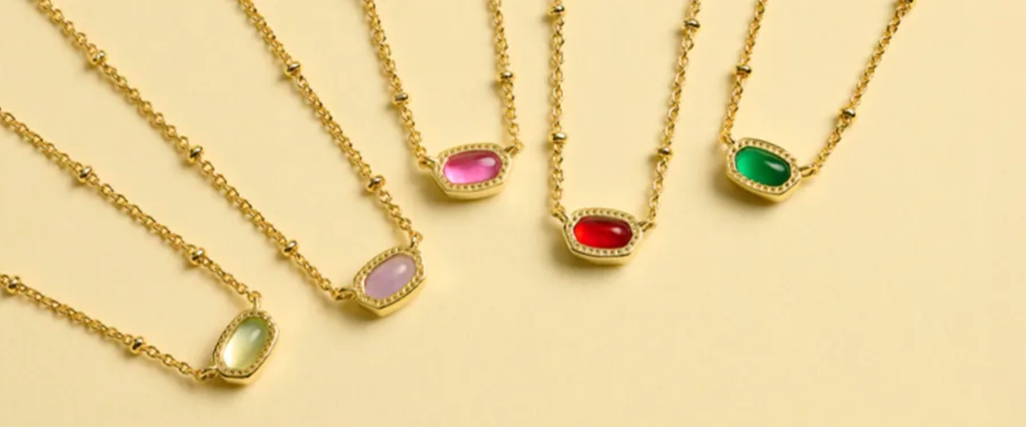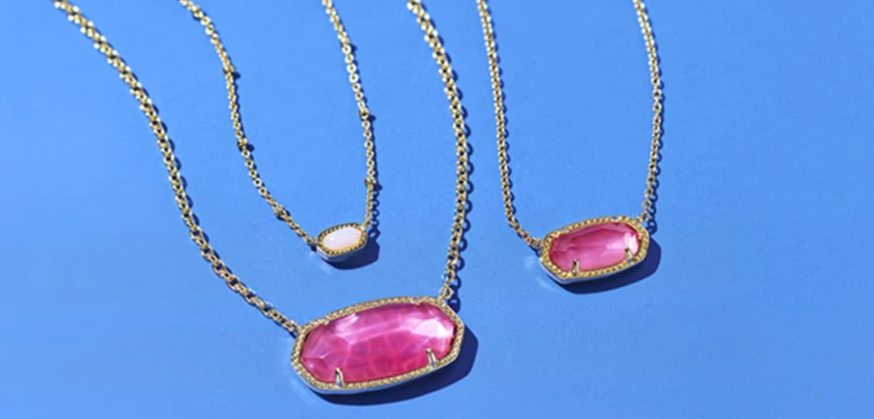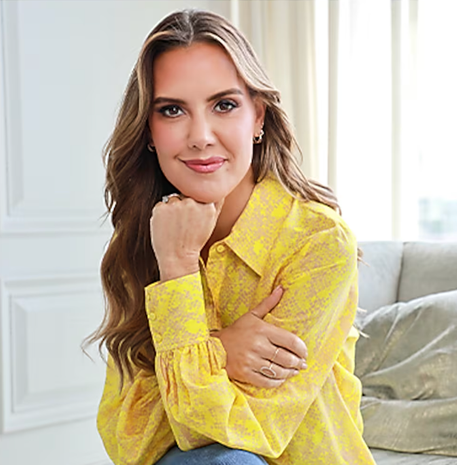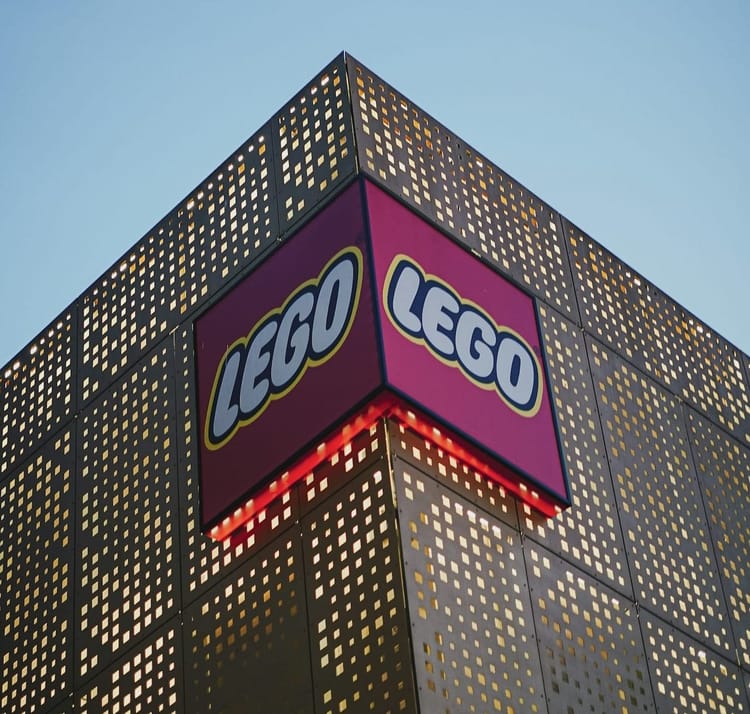Kendra Scott: How Kendra Changed The Jewelry Industry

In the world of fashion, few brands have managed to blend accessibility with aspiration as effortlessly as Kendra Scott. But long before her jewelry was featured in Neiman Marcus or donned by celebrities, Kendra Scott was just a new mom with a bold idea, a few hundred dollars, and an extra bedroom she turned into a design studio.
The year was 2002, and Scott had just given birth to her first son. She was going through a divorce and living in Austin, Texas—a city not exactly known at the time as a fashion capital. But she saw an opportunity. After visiting a department store and finding the accessories on the shelf too expensive or uninspired, she realized there was a gap in the market: stylish, high-quality jewelry at a mid-range price point. And just like that, the seeds of her namesake brand were planted.
Armed with $500 and a strong creative instinct, Scott began sourcing semi-precious stones and metals. Her vision was clear: to create jewelry that was both statement-making and versatile, bold but not unwearable. She began handcrafting each piece herself, working late nights from her home studio while her baby slept. And when it came time to sell, she didn’t wait for retail buyers to come to her. She hit the pavement, walking into local Austin boutiques with trays of her designs.
Those early days were scrappy with many store owners turning her away. Some even told her they didn’t see a market for her product. But others gave her a shot. And once the pieces hit shelves, customers responded. Her jewelry began to move quickly, not just because of its look, but because of Scott’s understanding of who she was designing for. She wasn’t chasing high fashion or mimicking mass-market trends. She was building a lifestyle brand rooted in color, confidence, and community.

That last piece—community—would soon become a major differentiator. Scott wasn’t just selling jewelry; she was cultivating an experience. From the beginning, she infused her brand with a kind of warmth and openness rarely seen in luxury fashion. Her Austin roots played a role here—Texas friendliness met entrepreneurial hustle in a uniquely disarming combination. She hosted trunk shows, collaborated with local nonprofits, and listened closely to her customers’ feedback. Word of mouth grew, not because of splashy marketing, but because people felt seen.
But even with traction, scaling a jewelry company is no easier than the next. Manufacturing, sourcing, retail distribution—all of it requires capital, infrastructure, and a long-term strategy. Scott leaned into her strengths. She bootstrapped the business for several years, reinvesting profits and building relationships with reliable suppliers. As her customer base expanded, so did her ambitions. She started thinking bigger: what would it look like to own her retail presence? Not just be stocked in stores, but to control the environment completely?
In 2010, eight years after founding the business, she opened the first Kendra Scott store in Austin. But this wasn’t just a boutique—it was an interactive experience. The store offered a unique Color Bar™ that let customers customize pieces in real time. Shoppers weren’t just buying jewelry; they were co-creating it. This level of personalization wasn’t common at the time, and it struck a chord. The store became a destination. And more importantly, it showed that Scott’s brand could stand on its own in a retail setting.
This move kicked off a new phase of growth. More stores followed, as did national recognition. In 2011, Kendra Scott jewelry was picked up by Nordstrom—a major win that brought the brand to a much wider audience. But Scott didn’t rely solely on retail partnerships. She continued building out her own locations, choosing markets where she could replicate the in-store experience that made her original shop so beloved.

And as the brand expanded, so did its team. Scott surrounded herself with people who shared her vision but also brought operational expertise. She remained the brand’s face and creative force, but she wasn’t afraid to delegate, allowing her to focus on long-term brand building. That mix of delegation and authenticity would prove invaluable as the company scaled to over 100 retail locations and more than 2,000 employees.
One of the key reasons Scott’s business succeeded where others faltered was her unwavering brand clarity. Every detail—from the signature yellow boxes to the philanthropic arm of the company—was intentional. She knew her customer and stayed focused on serving her. That clarity created cohesion across touchpoints, making the brand recognizable and resonant.
Brand Touchpoint
Every interaction a customer has with your brand—whether it’s scrolling past an Instagram post, walking by a storefront, unboxing a product, or speaking to support—is a brand touchpoint. These seemingly small moments collectively shape how people perceive your business. Strong brands understand that consistency across all touchpoints builds trust, reinforces identity, and strengthens loyalty. Whether it’s the color palette, the tone of voice, the packaging feel, or even the way employees speak about the company, each element contributes to the brand story. Miss one, and the experience feels disjointed. Nail them all, and you build something unforgettable.
Philanthropy also became a core part of the Kendra Scott identity. The brand launched the Kendra Cares program and began partnering with nonprofits across the country. Scott believed that a company should not only sell but also serve and that belief translated into millions of dollars in donations and thousands of local causes supported. This approach built trust with customers respecting both the product and the mission.
By the mid-2010s, Kendra Scott had become one of the fastest-growing fashion brands in the U.S., with a valuation that reportedly surpassed $1 billion by 2017 after a minority stake was sold to private equity firm Berkshire Partners. It was one of the rare examples of a woman-founded, woman-led company reaching unicorn status—especially in an industry historically dominated by legacy players or fast-fashion giants already.
Sharing Success
Kendra Scott gave each of her employees $10,000 and a first-class plane ticket after a minor sale of her company in 2017. It was part of her philosophy that success should be shared with the people who help build it. This wasn’t just a PR move—it reflected her deeply personal leadership style and her commitment to employee well-being.
It’s an example of how culture and values can extend all the way through the sale of a company. Sharing the upside not only fosters loyalty, it reinforces a brand’s authenticity, from how it treats customers to how it treats its own people.
In 2021, Scott stepped down as CEO but remained as executive chairwoman and brand visionary. This move allowed her to focus on long-term impact—both within the company and in the broader community. She launched the Kendra Scott Women’s Entrepreneurial Leadership Institute at the University of Texas, aiming to support and inspire the next generation of female founders.

Today, the Kendra Scott brand continues to grow, balancing e-commerce, brick-and-mortar, and social impact initiatives. It remains rooted in the same values it started with: family, fashion, and philanthropy. Kendra Scott has built something rare—a lifestyle brand that feels both aspirational and accessible.
For anyone looking to understand what it takes to build a business from scratch, the Kendra Scott story offers no shortcuts—but it does offer a blueprint. Start small. Know your customer. Build what’s missing. And above all, stay rooted in your “why.”
Because when a brand is built not just to sell, but to serve and inspire, its impact can stretch far beyond the jewelry case.
Works Cited
- Baldwin, Kristen. “How Kendra Scott Built a Billion-Dollar Brand.” Forbes, 11 Sept. 2017, https://www.forbes.com/sites/kristenbaldwin/2017/09/11/how-kendra-scott-built-a-billion-dollar-brand/.
- Nast, Condé. “How Kendra Scott Went From $500 to a Billion-Dollar Brand.” Inc., https://www.inc.com/magazine/201709/emily-canal/kendra-scott-billion-dollar-brand.html.
- “Our Story.” Kendra Scott, https://www.kendrascott.com/about-us/our-story.html.
- Goudreau, Jenna. “This Woman Built a Billion-Dollar Jewelry Company While Raising Three Sons.” CNBC Make It, 24 Mar. 2017, https://www.cnbc.com/2017/03/24/how-kendra-scott-built-a-billion-dollar-jewelry-company.html.
- Maloney, Jennifer. “Kendra Scott: From Spare Bedroom to Billion-Dollar Business.” The Wall Street Journal, 6 Dec. 2016, https://www.wsj.com/articles/kendra-scott-from-spare-bedroom-to-billion-dollar-business-1481043601.
- “How Kendra Scott Took a $500 Side Hustle and Built a Fashion Empire.” Entrepreneur, 5 Oct. 2021, https://www.entrepreneur.com/article/388702.




